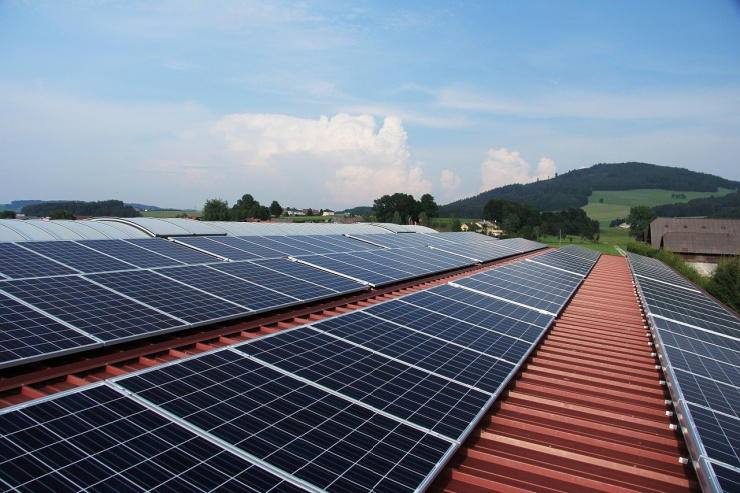The sun produces solar energy. As per the photovoltaic effect, solar energy is converted into electricity to run electric devices. Households and workplaces need solar power systems to benefit from solar energy.
What does a solar power system consist of?
There are several main requirements for a solar system. These are as follows:
Photovoltaic cells (or solar panels) harness solar energy. Panels used in commerce or industry are typically larger than those that are installed for residential use. The larger panels generate more wattage, allowing one to access increased energy supply with fewer panels. Despite this, the larger panels are heavier and more cumbersome to use. Solar companies must dedicate a more significant time period within which to ensure appropriate installation. The best solar company will ensure this.
The next item required is an inverter, either a string or a micro-inverter. A string inverter is the same size as a satchel, and a micro-inverter has the same dimensions as a small workbook.
The leading solar companies in Los Angeles County offer racking, which is the base on which a system must be installed. There are many types of racking companies. Racking is made of fastened aluminium. A good racking company is adaptable in its design and will be willing to stand by the hardwearing nature of the product.
Conserving the precious energy
To conserve energy generated by the system, you will need batteries and a charge controller. This is in case of limited access to power lines, so that you have the infrastructure to stand on your own, so to speak, should the need arise. If you are connected to power lines, the energy can be redirected into the grid and used at a later stage, or converted into credits, depending on who your service provider is and whether they offer this.
Batteries conserve the energy that the system produces, and a charge controller manages the frequency of charge generated from the panels. These elements also require cabling, fuses and disconnects. Additional equipment can be used to track systemic output, to facilitate and manage any faults in the system.
Solar does come with certain shortcomings
Solar is expensive to install, ranging from thousands to tens of thousands. Despite the longer-term pay-off, starting up is costly, and it is often not something to which everyone has easy access.
Solar relies entirely on the presence of the sun, and the geographical placement of your home will play a large role in the overall functioning of your system. If there is limited sun where you stay, the panels will not work as efficiently as they would have in a sunny area. Buying additional components to address this is costly as well.
Panels require a large amount of surface area for installation. For a household, this could mean twenty to thirty panels.
Energy storage can cost a lot. The batteries cost the most. Using batteries will deplete resources to store power, which can detract from solar as an asset. Batteries must only be operated if needed or as a backup if the grid fails.
Conserving the precious energy
To conserve energy generated by the system, you will need batteries and a charge controller. This is in case of limited access to power lines, so that you have the infrastructure to stand on your own, so to speak, should the need arise. If you are connected to power lines, the energy can be redirected into the grid and used at a later stage, or converted into credits, depending on who your service provider is and whether they offer this.
Batteries conserve the energy that the system produces, and a charge controller manages the frequency of charge generated from the panels. These elements also require cabling, fuses and disconnects. Additional equipment can be used to track systemic output, to facilitate and manage any faults in the system.
Solar does come with certain shortcomings
Solar is expensive to install, ranging from thousands to tens of thousands. Despite the longer-term pay-off, starting up is costly, and it is often not something to which everyone has easy access.
Solar relies entirely on the presence of the sun, and the geographical placement of your home will play a large role in the overall functioning of your system. If there is limited sun where you stay, the panels will not work as efficiently as they would have in a sunny area. Buying additional components to address this is costly as well.
Panels require a large amount of surface area for installation. For a household, this could mean twenty to thirty panels.
Energy storage can cost a lot. The batteries cost the most. Using batteries will deplete resources to store power, which can detract from solar as an asset. Batteries must only be operated if needed or as a backup if the grid fails.
*Collaborative post







No comments